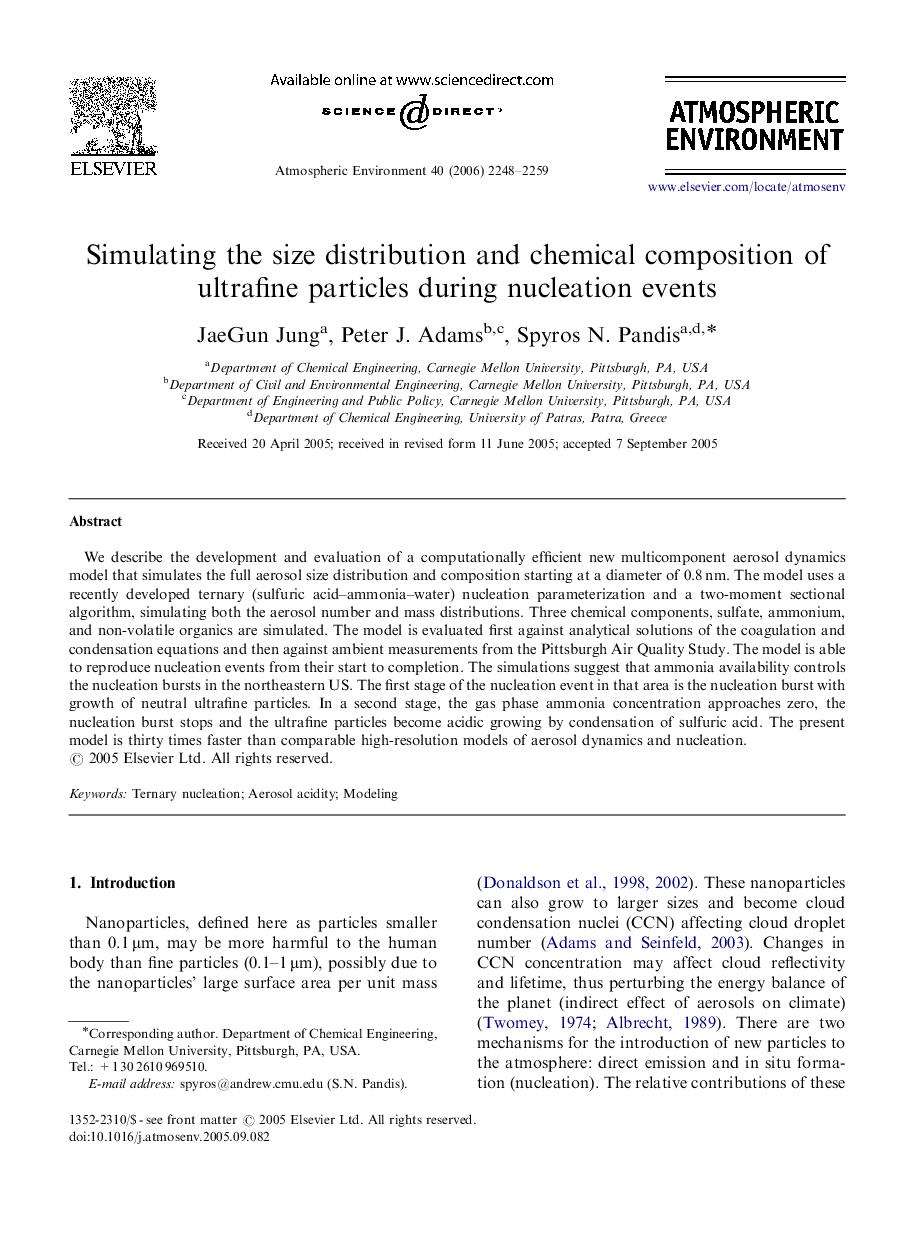| Article ID | Journal | Published Year | Pages | File Type |
|---|---|---|---|---|
| 4444109 | Atmospheric Environment | 2006 | 12 Pages |
We describe the development and evaluation of a computationally efficient new multicomponent aerosol dynamics model that simulates the full aerosol size distribution and composition starting at a diameter of 0.8 nm. The model uses a recently developed ternary (sulfuric acid–ammonia–water) nucleation parameterization and a two-moment sectional algorithm, simulating both the aerosol number and mass distributions. Three chemical components, sulfate, ammonium, and non-volatile organics are simulated. The model is evaluated first against analytical solutions of the coagulation and condensation equations and then against ambient measurements from the Pittsburgh Air Quality Study. The model is able to reproduce nucleation events from their start to completion. The simulations suggest that ammonia availability controls the nucleation bursts in the northeastern US. The first stage of the nucleation event in that area is the nucleation burst with growth of neutral ultrafine particles. In a second stage, the gas phase ammonia concentration approaches zero, the nucleation burst stops and the ultrafine particles become acidic growing by condensation of sulfuric acid. The present model is thirty times faster than comparable high-resolution models of aerosol dynamics and nucleation.
